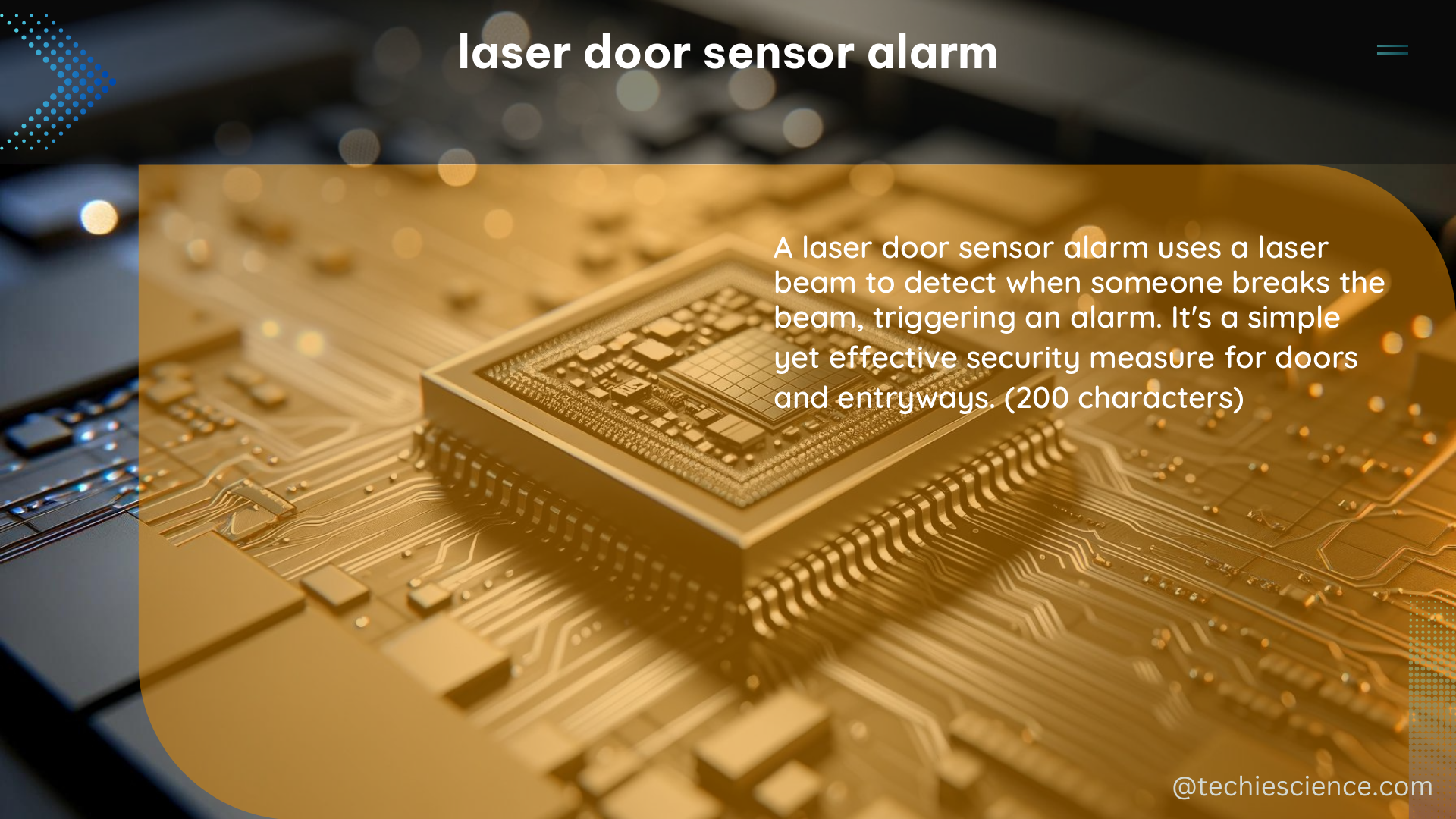The laser door sensor alarm is a cutting-edge safety device used in various applications, including passenger train door safety. It is designed to ensure that doors are closed when trains are moving between stations, reducing the risk of passengers or objects becoming entangled in the door. The sensor prototype is being developed under the Small Business Innovative Research Program, with a railroad partner identified for field testing.
Technical Specifications of Laser Door Sensor Alarm
The technical specifications of the laser door sensor alarm include the use of laser technology for detecting door movement and position. These sensors convert physical phenomena into measurable data, enabling them to determine whether the door is open or closed, and if it is moving within a specific distance.
Laser Technology
The laser door sensor alarm utilizes a low-power laser beam that is projected across the door opening. When the door is closed, the laser beam is uninterrupted, and the sensor detects this condition. If the door opens, the laser beam is broken, and the sensor recognizes the change in the physical environment.
Laser Beam Specifications
- Wavelength: 650 nm (visible red light)
- Power output: less than 1 mW (Class 2 laser)
- Beam divergence: less than 1 mrad
The use of a low-power, visible-wavelength laser ensures that the sensor is safe for use in public transportation environments, where passengers may be in close proximity to the door.
Sensor Functionality
The laser door sensor alarm is designed to generate an alarm if the door moves more than a preset threshold, typically around 10 mm. This threshold is adjustable based on the specific application and door design. During normal operation, when the door is latched, the sensor should not generate any alarms due to slight movements within the preset threshold.
Sensor Specifications
- Sensing range: 0 to 50 mm
- Accuracy: ±1 mm
- Response time: less than 50 ms
- Operating temperature: -20°C to 70°C
- Power supply: 24 VDC, 100 mA
The sensor’s ability to quickly detect door movement and generate an alarm within a tight tolerance ensures that the system can effectively prevent potentially dangerous situations.
Acceptance Testing and Maintenance

The laser door sensor alarm undergoes acceptance testing when first installed, consisting of a physical inspection to ensure proper installation and verification that the sensor is functioning correctly. Regular testing and maintenance are required to maintain the sensor in optimal operating order.
Acceptance Testing
- Physical inspection of sensor mounting and alignment
- Verification of sensor functionality by simulating door movement
- Confirmation of alarm generation and communication with the train control system
Maintenance Schedule
- Perform maintenance every 6 months
- Verify tamper operation and alarm generation
- Check electrical power and communication line conditions
- Clean sensor optics to maintain optimal performance
Adhering to the acceptance testing and maintenance schedule is crucial for ensuring the long-term reliability and effectiveness of the laser door sensor alarm system.
Other Sensor Technologies
In addition to the laser door sensor alarm, there are other types of sensors used in various applications, such as:
| Sensor Type | Application |
|---|---|
| Ultrasonic Sensors | Autonomous vehicles, object detection |
| Capacitive Proximity Sensors | Industrial automation, touch interfaces |
| Flexible Pressure Sensors | Healthcare, wearable devices |
These sensors use different technologies and principles of operation, but they all share the common goal of converting physical phenomena into measurable data for various applications.
Conclusion
The laser door sensor alarm is a cutting-edge safety device that uses laser technology to detect door movement and position, ensuring that doors are closed when trains are moving between stations. The sensor’s technical specifications, including the use of a low-power laser, precise sensing capabilities, and rigorous acceptance testing and maintenance protocols, make it a reliable and effective solution for passenger train door safety.
By understanding the technical details and best practices for the laser door sensor alarm, transportation operators and maintenance teams can ensure the optimal performance and long-term reliability of this critical safety system.
References:
– FRA Office of Research, Development, and Technology. (2021-12-10). 2022 RDT Current Projects. Retrieved from https://railroads.dot.gov/sites/fra.dot.gov/files/2021-12/2022_RDT_CurrentProjects.pdf
– ADS-51-HDBK. (1996-10-21). Retrieved from https://www.avmc.army.mil/Portals/51/Documents/TechData%20PDF/ADS51HDBK.pdf
– NUREG-1959. (2011-11-11). Intrusion Detection Systems and Subsystems. Retrieved from https://www.nrc.gov/docs/ML1111/ML11112A009.pdf
– ScienceDirect.com. (n.d.). Sensors for daily life: A review. Retrieved from https://www.sciencedirect.com/science/article/pii/S2666351121000425
– SEMI International Standards. (2020-02). Compilation of Terms. Retrieved from https://www.semi.org/sites/semi.org/files/2020-02/CompilationTerms1218_0.pdf

The lambdageeks.com Core SME Team is a group of experienced subject matter experts from diverse scientific and technical fields including Physics, Chemistry, Technology,Electronics & Electrical Engineering, Automotive, Mechanical Engineering. Our team collaborates to create high-quality, well-researched articles on a wide range of science and technology topics for the lambdageeks.com website.
All Our Senior SME are having more than 7 Years of experience in the respective fields . They are either Working Industry Professionals or assocaited With different Universities. Refer Our Authors Page to get to know About our Core SMEs.